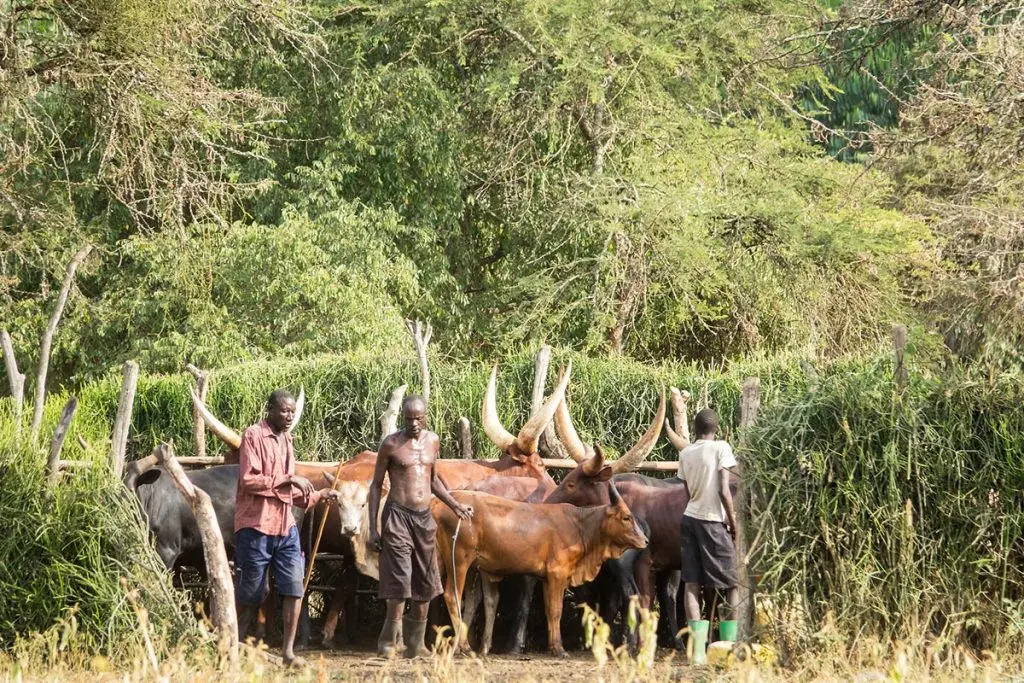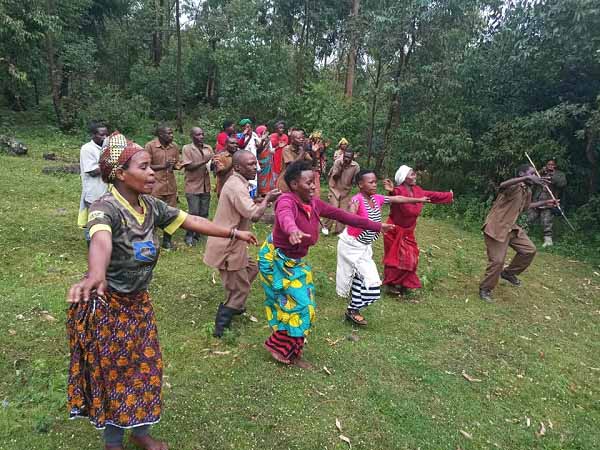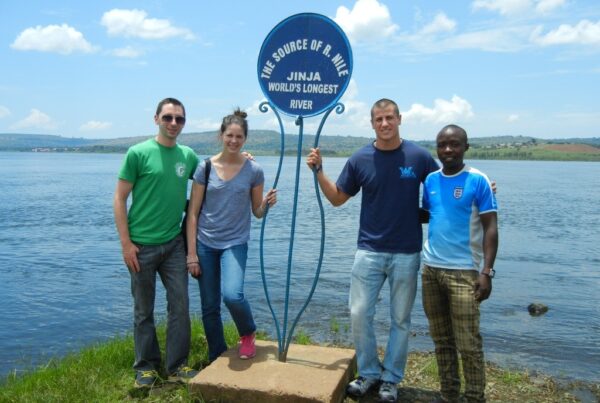Cultural Encounters with the Banyankole near Lake Mburo
Immersing in Uganda’s Rich Heritage
While Lake Mburo National Park is celebrated for its stunning wildlife and scenic landscapes, the surrounding communities offer an equally compelling narrative. Among them, the Banyankole people provide a window into a rich cultural heritage shaped over centuries. Encounters with the Banyankole are not simply tourist experiences; they are opportunities to witness traditions, values, and practices that have been preserved across generations, forming a living connection between humanity and the natural environment.
The Banyankole reside predominantly in western Uganda, in the Kiruhura and Mbarara districts, blending pastoral life with modern influences. Their cultural expressions, ceremonies, and everyday practices are closely linked to the land and its resources, including the ecosystems of Lake Mburo. Travelers engaging with the Banyankole are offered a chance to appreciate a culture that thrives in harmony with nature, providing insights into livelihoods, social structures, and indigenous knowledge.
This article explores the cultural encounters with the Banyankole near Lake Mburo, highlighting their traditions, lifestyle, ceremonies, and interactions with wildlife and nature, ensuring a deeper understanding of the human dimension within this iconic safari region.
The Banyankole: An Overview
The Banyankole are a Bantu-speaking ethnic group historically renowned for their pastoralist traditions. Livestock, particularly cattle, are central to their cultural and economic life, serving as symbols of wealth, status, and social cohesion. Cattle are not merely commodities; they are integral to rituals, marriages, and community celebrations. The iconic long-horned Ankole cattle, known for their elegance and resilience, are a defining feature of the region, creating striking landscapes of grazing herds against the backdrop of Lake Mburo.
Social structures within Banyankole communities are organized around family, clan, and local leadership. Elders, revered for their knowledge and experience, play a pivotal role in guiding social conduct, resolving disputes, and passing on traditional knowledge. Visitors are often introduced to these hierarchies and practices through guided village tours, where storytelling and interactive demonstrations provide a holistic view of Banyankole life.
The Banyankole language, Runyankole, is widely spoken, and greetings, songs, and oral histories remain central to community interactions. Through immersion, travelers gain a profound understanding of how language and storytelling preserve heritage and shape communal identity.
Traditional Livelihoods and Pastoral Life
A defining aspect of the Banyankole is their relationship with cattle and pastoralism. Herding is both a livelihood and a cultural ritual, with daily routines involving grazing, watering, and caring for livestock. Visitors to Lake Mburo’s neighboring communities may witness cattle drives across open plains, traditional milking practices, and the social gatherings that accompany these activities.
Milk, ghee, and meat from cattle are staples of the Banyankole diet, and culinary practices are deeply connected to cultural beliefs. Fermented milk, known locally as “mursik”, is a delicacy that exemplifies the fusion of nutritional value, preservation techniques, and cultural symbolism. Travelers often participate in tasting sessions, learning how food practices are linked to health, hospitality, and social rituals.
Beyond pastoralism, agriculture complements the Banyankole lifestyle. Crops such as bananas, millet, beans, and sorghum are cultivated using traditional methods, often integrated with communal labor systems. This combination of livestock and agriculture illustrates the sustainability of indigenous livelihoods, which have been adapted to the environmental conditions surrounding Lake Mburo.
Ceremonial Practices and Cultural Expression
Cultural encounters with the Banyankole are enriched by ceremonial practices, which showcase values, identity, and social cohesion. Marriage ceremonies, for instance, are vibrant affairs marked by music, dance, and rituals involving cattle as dowry. Visitors may witness songs that narrate family histories, dances that celebrate fertility, and rituals that honor ancestors, all providing insight into the moral and spiritual frameworks of the community.
Initiation rites, traditionally performed to mark the transition from youth to adulthood, are another significant cultural element. While modern influences have altered some practices, elements such as communal storytelling, mentorship by elders, and demonstrations of skills like herding, hunting, and craftsmanship are still observed in rural areas near Lake Mburo. These rituals convey lessons on responsibility, courage, and social harmony, offering travelers a glimpse into the ethical and moral foundations of Banyankole society.
Festivals and community gatherings also provide opportunities to witness music, dance, and oral traditions in action. The rhythmic drumbeats, melodic chants, and intricate dances performed during ceremonies illustrate the depth of cultural continuity and creativity. Visitors are encouraged to observe respectfully and participate when invited, ensuring an authentic exchange that honors both the travelers and the host community.
Interaction with Nature and Wildlife
The Banyankole worldview is deeply intertwined with nature, shaping their approach to conservation and wildlife interaction. Pastoral practices, including rotational grazing and seasonal movement of herds, reflect an understanding of ecological balance and resource management. These practices have allowed communities to coexist with wildlife in and around Lake Mburo for generations.
Livelihoods are often intertwined with natural cycles. Knowledge of water sources, grazing patterns, and the behavior of wildlife, such as zebras, buffaloes, and impalas, is transmitted orally across generations. Visitors gain an appreciation for this ecological literacy during guided tours, where local guides explain how traditional practices help preserve biodiversity while ensuring community survival.
Cultural beliefs also influence attitudes toward specific species. Certain animals are revered or associated with symbolic meanings, shaping interactions and management practices. For instance, large cattle herds are often grazed in ways that avoid encroachment on wildlife habitats, ensuring coexistence with the park’s iconic species. These practices demonstrate how cultural values can complement formal conservation efforts, providing a holistic approach to ecosystem management.
Handicrafts, Art, and Material Culture
Cultural encounters with the Banyankole are also expressed through handicrafts, textiles, and artifacts. Traditional crafts include beadwork, basketry, and pottery, each reflecting both utility and aesthetic expression. Visitors may observe artisans creating objects using indigenous techniques passed down through generations, offering tangible connections to the culture and environment.
Textiles, often dyed using natural materials, feature distinctive patterns and colors that convey identity, status, and community affiliation. These artistic expressions serve as visual storytelling, providing insight into historical narratives, social hierarchies, and symbolic meanings embedded in everyday life. Purchasing crafts directly from artisans supports local economies and encourages the continuation of traditional practices.
Architecture, although modest, also reflects cultural principles. Houses are traditionally constructed using locally sourced materials such as mud, thatch, and timber, designed for thermal efficiency, durability, and harmony with the surrounding landscape. Visitors are often guided through homesteads, observing construction methods, interior organization, and spatial symbolism, deepening their understanding of the integration between culture, lifestyle, and environment.
Engaging with Community Life
Visitors who engage respectfully with Banyankole communities often experience daily life firsthand, including participation in farming, cooking, and herding activities. These immersive experiences foster mutual understanding, providing travelers with insights into social structures, gender roles, and the rhythm of rural life.
Children and elders often serve as guides in storytelling sessions, sharing folklore, proverbs, and historical narratives that connect past and present. Markets and communal spaces offer opportunities to witness trade, negotiation, and social networking, revealing the economic and cultural interdependence that sustains community cohesion.
Interactions are guided by principles of respect and reciprocity. Travelers are encouraged to observe local customs, dress modestly, and seek permission before photographing individuals or ceremonies. When approached with sensitivity, these encounters become transformative, fostering empathy, awareness, and lasting connections.
Cultural Tourism and Sustainable Practices
Engaging with the Banyankole near Lake Mburo contributes to sustainable tourism that supports both community development and conservation. Revenues from guided tours, homestay experiences, and cultural demonstrations provide income for education, health, and infrastructure projects, reducing pressure on natural resources.
Tourism initiatives are designed to minimize disruption while maximizing benefits. Guides are often drawn from local communities, ensuring that knowledge, traditions, and practices are shared authentically. Travelers are encouraged to participate actively in sustainable practices, such as respecting wildlife, supporting local economies, and learning from indigenous ecological knowledge.
Cultural tourism also reinforces conservation awareness. By highlighting the connections between livelihoods, wildlife, and ecosystems, travelers gain an appreciation for the symbiotic relationship between humans and nature, enhancing the overall safari experience in Lake Mburo National Park.
Timing and Planning for Cultural Encounters
While cultural experiences with the Banyankole can be enjoyed year-round, certain periods offer enhanced opportunities. Dry seasons, from June to August and December to February, facilitate easier access to rural areas, allow participation in ceremonies, and coincide with key agricultural activities, providing insights into herding and crop management.
Wet seasons, from March to May and September to November, showcase vibrant landscapes, harvest festivals, and seasonal rituals that reflect adaptation to environmental cycles. Visitors seeking immersive photography and storytelling experiences may prefer these months for their vivid scenery and dynamic cultural activities.
Regardless of season, planning guided visits in advance ensures meaningful engagement, as local guides provide context, introductions, and structured experiences that respect both visitors and host communities.
A Journey into Culture and Connection
Cultural encounters with the Banyankole near Lake Mburo National Park offer a unique complement to traditional wildlife safaris, providing insight into the human dimension of Uganda’s landscapes. Through interactions with pastoralists, artisans, elders, and families, travelers gain an understanding of traditions, livelihoods, and values that have sustained the region for centuries.
These encounters reveal the interdependence of culture, nature, and community, emphasizing how heritage and ecology are intertwined. Visitors leave with more than memories of scenery or animals; they gain stories, perspectives, and connections that enrich their appreciation of Uganda as a whole.
To experience these profound cultural engagements alongside exceptional wildlife encounters, travelers are encouraged to book their Africa tours and safaris with WildHorn Africa, ensuring guided, respectful, and unforgettable journeys into the heart of Lake Mburo and its surrounding communities.





 WildHorn Africa – Authentic and unforgettable tours across Africa, guided by local experts who know the land, wildlife, and culture best.
WildHorn Africa – Authentic and unforgettable tours across Africa, guided by local experts who know the land, wildlife, and culture best.


